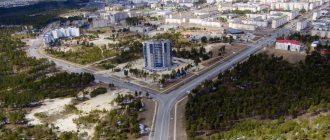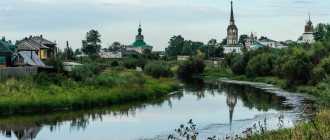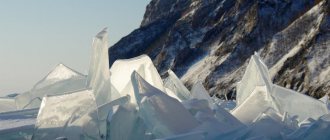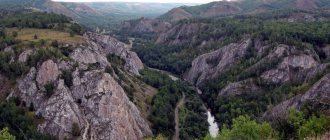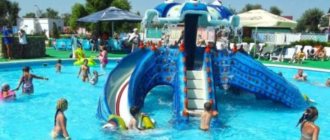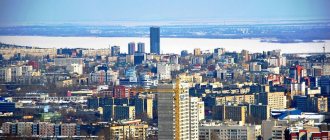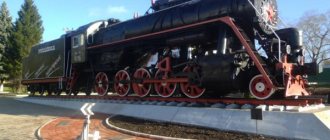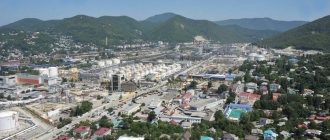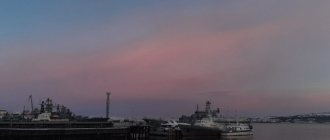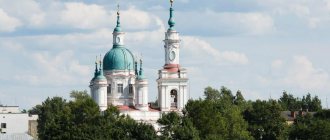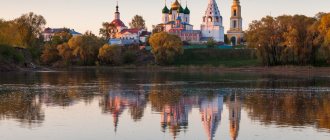General information and history of the area
The city of Kronstadt on Kotlin Island is the smallest district in St. Petersburg.
This is truly the sea gate of the Northern capital, a UNESCO World Heritage Site, a fortress city of military and military glory, which has always been on the front line in naval battles in which its older brother Petersburg took part. Not a single enemy ship passed by Kronstadt. It is clean and windy, where the world's first submarine and another first in shipbuilding - the world's first icebreaker - were built. More than 40 expeditions around the world started from here, great Russian navigators, scientists and cultural figures lived here at different times: Admiral Thaddeus Bellingshausen, Admiral Stepan Makarov, Admiral Fyodor Litke, radio inventor Alexander Popov, poet Nikolai Gumilyov and many others. In Kronstadt, literally every meter of land can tell a lot about the controversial history of our country. We will try to tell you more about this small, but wonderful island from all sides.
Formed as a result of the retreat of the last glacier, Kotlin Island for a long time (almost 4 centuries) was a kind of border between Russia and Sweden. There was a period when the island, on which the Russian fortress was later located, belonged to the Swedes, but in 1703, when Tsar Peter I decided to build St. Petersburg, the first thing he did was build his first fortified fort on the legally Swedish island of Kotlin.
Forts of Kronstadt
In the spring of 1704, the Swedes were very surprised to discover that not only had their island been taken away from them, but also that in place of a deserted piece of land, a fairly strong fortress had been formed, blocking the passage for Swedish ships to the Neva Guba. The Russian Empire at that time was rapidly gaining strength, and this time the European neighbors remained silent. The first fortress was called Kronshlot, and it was its construction in 1704 that is considered the beginning of the life of the island of Kronstadt in its new guise: the sea guard of the Northern capital. Almost 20 years later, the king initiated the construction of the large fortress of Kronstadt, which gave a new name to the entire island.
Gradually new forts were built and the shores of the island were strengthened. Peter forcibly resettled noble and merchant families here. The residence of the emperor himself (completely destroyed by fire at the end of the 18th century) and the elegant Italian Palace of the arrogant favorite Alexander Menshikov appeared in Kronstadt. The Admiralty appeared here: the city officially became the base of the Russian Baltic Fleet.
Italian Palace
In addition to the fire mentioned above, the fortress city was repeatedly “attempted” to be destroyed by floods that were frequent in the low-lying areas of St. Petersburg: one of the largest happened in 1824 - almost all buildings, forts, fortresses and residential buildings were destroyed. However, Kronstadt was restored.
Of the high-profile historical events of past years that took place on the island, one can also recall the bloody uprising of 1905. The sailors, who in tsarist Russia were always close to the authorities and at the same time opposition-minded, responded vividly to all the changes taking place in the country. A small, but very cruel and not at all “victorious” war in Japan, anti-monarchist sentiments and a number of other political events provoked unrest among officers and soldiers. For some time, the island was completely in the hands of the rebels, but the tsarist troops arriving from the “mainland” suppressed the uprising.
During Soviet times, Kronstadt continued to be what it was created for and what it continues to be to this day: a conscientious guardian of Leningrad's maritime border. The island has always been somewhat independent of the opinion of the authorities: for example, in 1921, immediately after the end of the Civil War and the establishment of Soviet power, it suddenly turned out that the sailors of Kronstadt not only did not unanimously support the new government, but even opposed it and demanded freedoms and democracy. Of course, such an initiative, like the uprising in 1905, was nipped in the bud, but, nevertheless, this is a very telling fact.
During the Great Patriotic War, Kronstadt defended its water borders and was bombed by fascist aircraft. In the post-war period, military-industrial and shipbuilding production was reorganized here; the island was a closed strategic facility, where not everyone was allowed in and not with any passes. Only in 1996 did it become possible for ordinary citizens and tourists to get to Kronstadt.
Petrovsky dock
Marine plant
Today this is one of the most unique districts of St. Petersburg. In a small area - just 19 square kilometers - there are historical sights, shipyards, and military units of the Russian navy. Until the early 80s, the island could only be reached by water. Gradually, ferries began to be launched into Kronstadt, then they got here via a dam (the Complex of protective structures of St. Petersburg from floods), and today the island is connected with the rest of the city and its environs by the modern highways of the Ring Road. There is also an underground tunnel, built in 2011, which is also part of the transport communications connecting the island with the city.
Of course, there is no metro here, and there is unlikely to be one in the coming decades, but the Western High-Speed Diameter is being built, the roads to Kronstadt are good and you can get here quite quickly outside of rush hour. However, from the point of view of ordinary residents of the island, this is inconvenient: transport links are overloaded - not everyone has their own car, and the number of public transport units is limited. Kronstadt residents spend a lot of time getting to St. Petersburg and back, but people work and study, which means they need to travel, if not daily, then regularly.
Ring Road to Kronstadt
Kronstadt. Dam
Public transport is represented by buses and minibuses. From the point of view of transport accessibility at present, the Kronstadt district looks even more prosperous than many other areas of St. Petersburg, but for some reason among residents of the Northern capital there is an opinion that Kronstadt is somehow very far away and inconvenient. Although only 48 kilometers from St. Petersburg. There is no rush to move here: only those who were born here live on the island, or people invited to work in Kronstadt and settled here. As already mentioned, there are many military units and industrial facilities on the island; there are not many “indigenous” residents.
Landscape of the island
In this regard, the construction industry in Kronstadt is not thriving. Secondary housing is represented by the few survivors of all the historical hurricanes that swept over the island, the old pre-revolutionary building, there are a few Stalinist and brick post-war buildings, of course, there are “Khrushchevs” and the 137th series of “ships”. There are few new construction projects: as we know, demand creates supply, and since there are few people willing to move to Kronstadt, little housing is being built.
Old housing stock in Kronstadt
Stalinists in Kronstadt
Several times in the administration of St. Petersburg there were proposals to reconstruct the residential area of the island: to send dilapidated buildings of old buildings for demolition or major repairs, and in their place to build residential complexes of various statuses that would satisfy the living space needs of the Kronstadters themselves, as well as , perhaps, would attract new real estate buyers. However, today these are all just ideas.
The island still lives off of facilities working for the defense complex and/or involved in the construction and repair of ships. The infrastructure is not fully developed, only the essentials are provided, real estate is inexpensive (you can find offers for $1,200 per square meter), utilities are the same, compared to other areas (the average bill is 1,300-1,700 rubles per month). Kronstadt is the personification of a modest, somewhat harsh island life, which appeals to people with a certain character.
Attractions
The most famous architectural monument of the city is the Naval St. Nicholas Cathedral, built in 1902-1913. In addition, a number of historical buildings of the 18th-19th centuries have been preserved: the Italian Palace, “provincial” houses, the Kronstadt Admiralty complex, the walls and barracks of the Kronstadt Fortress, the Arsenal (engineer J. Whistler), Gostiny Dvor. The cast iron pavement in the city center is also of interest.
Temples
The churches of Kronstadt were not only places of worship, but were also guardians of relics of the military glory of the Russian fleet. Until 1917, the city had about 30 Orthodox churches, two Lutheran churches, one Catholic and one Old Believer, as well as a mosque and a synagogue.
- Naval St. Nicholas Cathedral
- Cathedral of the Vladimir Icon of the Mother of God
- Chapel of the Epiphany "Savior on Water"
Inactive
- St. Andrew's Cathedral (destroyed, chapel restored)
- Church of the Exaltation of the Cross - consecrated by Fr. John of Kronstadt; building of the former Anglican Church of Kronstadt.
- Church of St. Nicholas of the Estonian-Swedish-Finnish parish (demolished).
- Catholic Church of St. Apostle Peter (Kronstadt) (Lenin Ave., 5; not preserved)
- Lutheran Church of St. Elizabeth - now the building belongs to Vodokanal.
Museums
- Museum of the History of Kronstadt (historical architectural and art museum) - st. Leningradskaya, 2A
- Museum "Kronstadt Fortress" branch of the Central Naval Museum - Yakornaya Square, 2
- Memorial Museum-Office of A. S. Popov - st. Makarovskaya, 1/3
- Museum-apartment about. John of Kronstadt - st. Posadskaya, 21A
- Museum of the Kronstadt Marine Plant - Lenin Ave., 39A
- Kronstadt Maritime Museum - Andreevskaya st., 5
Forts
Northern forts
- Fort No. 1
- Fort No. 2
- Fort No. 3
- Fort No. 4 (“Zverev”)
- Fort No. 5
- Fort No. 6
- Fort No. 7
- Fort "Totleben"
- Fort "Obruchev"
- Gunpowder Fort
Forts on the island Kotlin
- Fort "Shants" (Shanets) ("Alexander-Shants")
- Fort "Reef"
Southern Forts
- Fort No. 1
- Fort No. 2 (“Dzichkanets”)
- Fort No. 3 (“Count Milyutin”)
- Fort "Paul I" (Risbank)
- Fort "Kronshlot"
- Fort "Peter I" ("Citadel")
- Fort "Alexander I" ("Chumny")
- Fort "Grand Duke Constantine"
- Battery "Prince Menshikov"
Other attractions
- Water tower. Built in 1926. (Kronstadt)
- Gostiny Dvor
- Petrovsky dock
- Fortress wall
- Lighthouse Tolbukhin
- Footstock
- Dam
- Blue Bridge over the Obvodny Canal
- Dock Bridge
- Hemp Bridge over the Obvodny Canal
- Hemp Small Suspension Bridge
- Abutments of the underground bridge across the Obvodny Canal
- Makarovsky Bridge over Petrovsky Ravine
- Hemp Small Suspension Bridge
- Anchor Square
Ecology of the area
The environment in Kronstadt is not good. This is due to the fact that, firstly, there are many industrial and military enterprises on the island with hazardous production and/or waste dumping, and, secondly, this same waste has been stored on Kotlin Island for years and is not removed anywhere. The air in Kronstadt is relatively clean. Winds and distance from polluted St. Petersburg make the air on the island clean and fresh, although quite cold even in the summer.
On a small territory of the island there are 3 parks: Petrovsky Park, Summer and Hospital Gardens, as well as the large Catherine Square. In addition, the island itself is not overly developed and there are many “wild” places to walk, with green grass and shady groves. Many St. Petersburg residents go to Kronstadt Beach - it is much cleaner than all others within the city, a favorite place for walks and weekend picnics.
Summer garden
Petrovsky Park
But the background radiation leaves much to be desired: in Kronstadt there are more than 35 areas where it is “off scale” beyond the norm. It is not possible to reliably find out who, how and where radiation is leaking, since military facilities (the most likely culprits of this contamination) keep information secret and it is almost impossible to carry out objective monitoring.
There are also problems with water. In the summer and when the sea is calm, the indicators are quite satisfactory, but as soon as the coastal ice begins to melt after winter or when a storm breaks out in the Baltic, the water in Kronstadt immediately becomes dirty. There are several reasons for this: firstly, it happens that sewerage and other waste from island enterprises are discharged directly into the “open sea” - that is, into the Gulf of Finland, and secondly, due to industrial activity and serious soil pollution, elements of heavy metals are mixed with groundwater, oil, mercury and other harmful substances also enter the bay, where they settle in bottom sediments.
An additional source of pollution is, of course, ships - active and decommissioned - drifting off the Kronstadt shores. But it is not only the ships themselves that pose an environmental hazard, but also the ammunition placed on them.
As sad as it may be, all this, as well as the rather monotonous island life, affects the health of the Kronstadt residents. Here, high rates of tuberculosis and cancer are consistently recorded; the organs of vision, nervous system, and skin suffer. Here, despite the isolation of the area from the big city and, it would seem, its vices and temptations, there are 2% more cases of systematic use of alcohol and drugs by people than the average for St. Petersburg.
Petrovsky Park: a meeting place for romantics
Through the forged gates you will find yourself in an unknown world, permeated with peace and tranquility. This is Petrovsky Park, located in the heart of the city of Kronstadt. The author of the large-scale project is F.F. Bellingshausen (at that time the military governor of the city). He himself financed the work of the builders, independently selected seedlings for landscaping the area, gradually turning an ordinary piece of land into an ecologically clean part of the island.
After the revolution in 1917, the green area received a new name - Freedom Park, but in 1991 the first name again took its place in official documents and conversations of local residents.
It is equally good in both spring and autumn
Nearby is the Winter Marina, one of the most interesting places on the island, created by the hands of convicted convicts, serfs and Swedes who were captured. For more than 100 years, there was a kingdom of wood here - not a single object made of metal or stone, only noble wood. In 1859, city authorities came to the conclusion that the pier created a not entirely harmonious contrast to the landscaped park located nearby.
Population of the area
According to the population census of the city of St. Petersburg for 2010, about 43 thousand people live in the Kronstadt district. Most of the working population (approximately 26 thousand people) is employed in the island's enterprises. Basically, these are families of military men and sailors who serve in Kronstadt - entire dynasties whose generations fought and worked for the benefit of the defense complex and the navy.
There are a sufficient number of pensioners and there is no influx of “new blood” at all: young people are trying to leave the island for the city, where there are much more opportunities. The island's population is rapidly declining. In terms of education level, these are people with technical or military specialties; there are also many who graduated from secondary specialized educational institutions.
Business card of the city.
The Kronstadt Naval Cathedral in the name of St. Nicholas the Wonderworker is considered the heart, symbol, and calling card of Kronstadt. The Main Cathedral of the Russian fleet was rightfully erected right here - in its cradle, on a small island that repelled the invasions of all enemies, raising thousands of famous fighters and discoverers.
This is a monument to the exploits of brave sailors, great victories and losses of the Russian fleet, and a repository of maritime relics. He brought together the names of all the sailors who gave their lives for the Fatherland, all the fallen naval priests - this is a shrine that embodied the very spirit of service in the navy, a symbol of loyalty and heroism.
Infrastructure
Since for a long time Kronstadt was a sensitive military facility, even during the times of the Soviet Union quite a decent infrastructure was created here, allowing residents, albeit in a limited range, to have constant educational and medical services.
Today on the island there are six secondary schools, 15 institutions of pre-school and additional education. A music and art school, schools for children with alternative development, several clubs for teenagers, a Palace of Culture, as well as a sanatorium-type boarding school have been opened.
Various sports and recreation complexes and schools continue to function: the island has its own stadium, swimming pool, several gyms, and an ice skating rink (in the winter). There is a Sailors' Club and an Officers' House. There are also interest clubs that unite people based on their interests and hobbies.
Naval Cadet Corps
Palace of Culture named after Martynov
Among higher educational institutions one can name the Naval Cadet Corps, as well as several branches of universities in St. Petersburg: the Academy of Service and Economics, the University of Communications and the North-Western Polyclinic University. There are also several public research centers in the Krostad region, the most modern of which is the integrated library system, with the help of which the use of various libraries on the island can be centralized.
Among the medical institutions, there are several private clinics, mainly representing the offices of family or children's doctors, there is also a sanatorium for children "Aurora" and seven public medical institutions, both inpatient and outpatient.
As for retail outlets: of course, in Krostadt there are places to buy everything you need, but the offerings are not very diverse. There are no hypermarkets or large shopping centers on the island. Residents prefer to go to the “mainland” to buy food and clothing; here they can buy only the most necessary things. Of course, this cannot be considered a proven pattern, but many residents of Kronstadt complain about the high cost and “not the first” freshness of the products sold in local stores.
As for transport communications and the development of the city itself, the tourist center of Kronstadt has recently been improved. Sidewalks and paths near the Naval Cathedral, the Tree of Wishes, the Water Tower and other attractions were put in order, a garden and park area was arranged, benches and places for rest were installed for residents and guests of Kronstadt. The island is in demand among foreign and Russian tourists; in addition, the recent opening of a passenger port on Vasilievsky Island encourages visits to Kronstadt - cruise ships have begun to visit here more and more often.
Naval Cathedral
Wish tree
Sundial
If you think that this is just a decoration of Kronstadt, then you have never been to this hospitable city. Every local resident will say that they show solar time; until recently, all of Russia lived according to it.
The attraction is located near the old Water Tower on a high hill. You can climb one of four staircases running down to its foot, each to its “own” side of the world. The dial of the watch is very unusual - on the dial, framed by a crown, there are Roman numerals. There is an anchor in the center, the shadow of which is an arrow. The teeth of the crown allow you to find out the exact time in 5 time zones of the globe.
Enterprises and work
The vast majority of the civilian population of Kronstadt, which does not work in St. Petersburg, is employed at the Moby Dick container port.
Container port
St. Petersburg, in general, is a port city in every sense of the word, and the container port of Krostadt is of very important economic and commercial importance. There is also a huge Marine Factory engaged in the manufacture and repair of ships. There are also completely “peaceful” enterprises on the island, such as a clothing factory, a furniture factory, a bakery and a meat processing plant.
Marine plant
Small and micro businesses are, for the most part, either grocery trade or standard services for repairing cars, equipment, shoes and clothing. This business is developing poorly in the Kronstadt region: most enterprising people prefer to “promote” their business in St. Petersburg. In general, the area is quite poor, living off the city and federal budget.
Crime
Due to the isolation of the Kronstadt region, it has a somewhat specific criminal background. Serious economic crimes occur mainly in the container port area. There are also cases of offenses at military facilities, but military records management also deals with them.
Among everyday crimes one can single out street crime, car and apartment thefts, the cause of which is mainly drug use and, accordingly, the fact that drug addicts need to constantly raise money for the “potion”. The area is very unfavorable for drug addiction: a small number of police officers and the area’s distance from the city facilitates the activities of drug dealers and traffickers. Almost every month several offenses of this kind are recorded in the area.
Cast iron pavement
Manager of the Steamship Plant V.P. Lebedev brought an interesting idea from America - to make a pavement from cast iron tiles according to Knapp's design. This is not only beautiful, but also practical: the ordinary cobblestones covering the streets of Kronstadt were constantly subject to restoration due to the marshy soil beneath them.
First, the courtyard of the Steamship Plant was laid with cast iron tiles, then the area near the Hemp Bridge, the road to the Admiralty, along Petrovskaya Street. The skillfully made cast iron checkers were removed during the war years, they were used to make mines, so the unique pattern of the pavement was preserved only in fragments. This is the highlight of Kronstadt, which tourists come to see.
And such a beautiful drawing - all over the pavement
